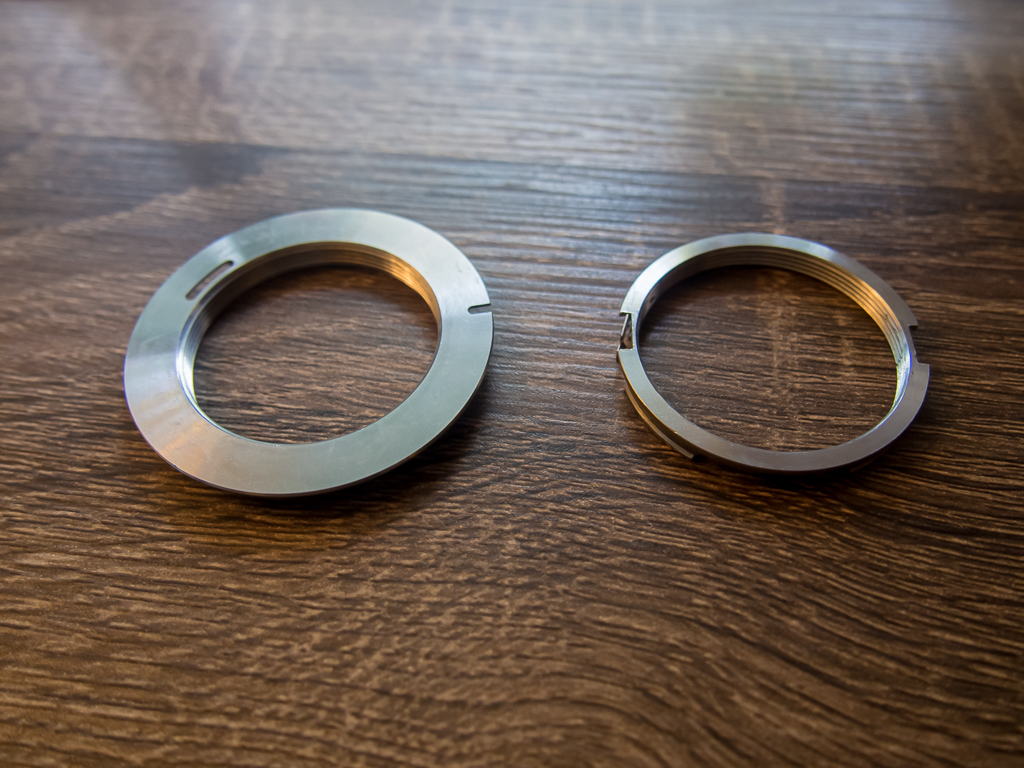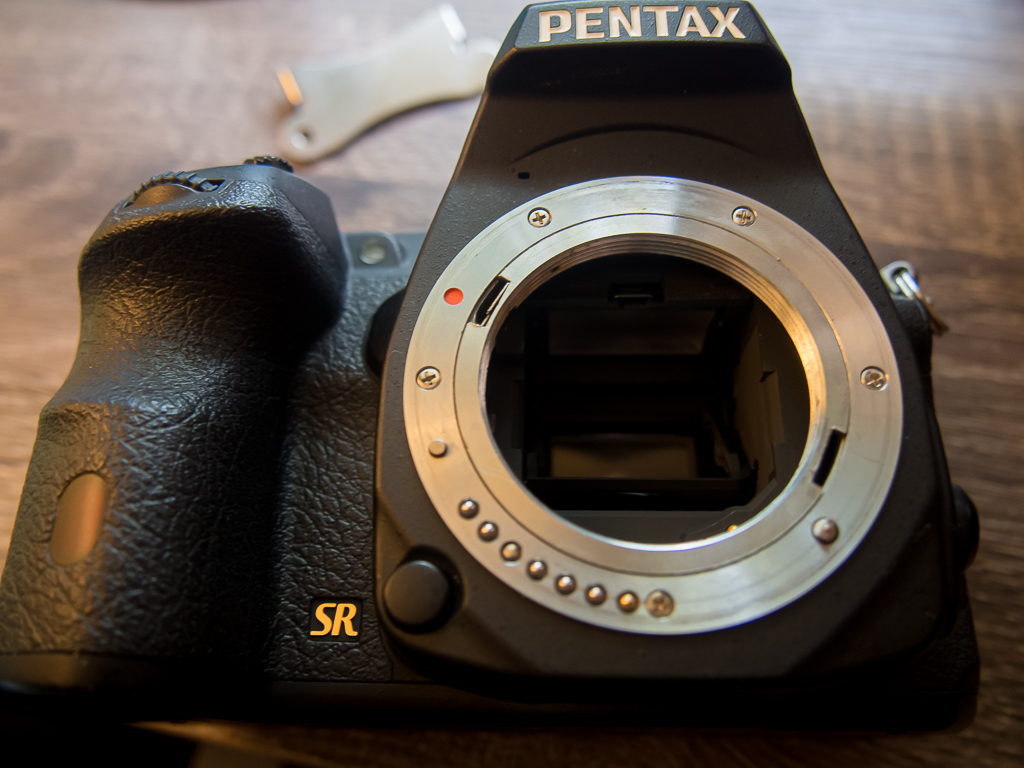( and why it’s fun to use old lenses )
This article is about the use of adapters on a Pentax dslr, mileage may vary on others brands.
One thing that I like about Pentax DSLR ( and slr) is its ability to use old M42 lenses that were used on Pentax cameras (and a lot of other brands) until about 1975 very simply. You just need the adapter. But get the right one, 2 types are running around.
M42 was a screw mount of 42mm, hence the name. It was kind of universal and a lot of camera makers were using that type of mount for several years. In a way it was cool, a camera from brand X could use any lens from brand Y that was M42.
But soon this mount would show it’s limitations with improving technologies. It’s hard to develop a way for the camera to read the aperture ring, some like Praktica did, but the approach wasn’t universal. Forget about auto focus and on top you can’t switch lens rapidly, you have to unscrew the lens then screw the other one you wish to use. A bayonet type you can switch lenses in a matter of seconds.
So lens makers started to use bayonet mount, Pentax introduced K-mount in the mid 70’s. Theses mount solves a lot of problems, with its predictable orientation of the lens vs the body of the camera it enable to add pins and shafts that permit the camera to read the aperture ring and also control it, enabling real auto exposure when the camera can now not only control it’s shutter speed but also the aperture during a shot. But every maker came with it way of doing theses, so brand X no longer work on camera brand Y. the Introduction of shaft enabled also auto focus but in the 90’s additional pins enabled powering a drive motor directly in the lens for that purpose, making focusing way quieter, but a lot of Pentax body still offer a shaft to driver older autofocus lens.
But back then in 1975, with the introduction of the K mount, what happens with a camera owner that wants to switch to the newer camera body? Like today something like this means that the owner of the camera would also have to replace all his lenses, a move that can be quite costly. So Pentax came up with an adapter, on my first image its the adapter on the right. But that first adapter can be quite tricky to install and to remove, a tool is included to help remove it. Not really simple to use but it prevents you from losing a customer to your brand because your last years lenses don’t work on your new body. It was a good transitional step.
As you can see on the left, once installed it literally converts your camera for an M42 lens, fitting exactly inside the K mount. You can now screw any M42 you like, but be aware, you lose autofocus and light metering can become less precise at higher F stops. You might need to go in the camera parameters and change the “Using Aperture Ring” setting. It work well but it’s less convenient if during a shoot you want to go from a M42 to a K mount, you will have to remove the adapter and if you’re outdoors or in a dusty environment you might introduce sand, dust or other stuff in your camera.
So I guess to make the installation of an adapter more easy someone came up with the second one, i will call it the “bad” type. As you can see on the illustration this one covers the pins and shafts, in a way that’s ok, the M42 lens have no use for them. But that type of adapter add about 1mm between the camera body and the lens. That 1mm will make all the difference if you want to focus to infinity or at distances like 20m (65 feets). So I guess if you only plan to use these lenses for portraits you might get away with the “bad” adapter, but if you want to exploit the full focusing range of a lens then the original type of adapter should be your choice.
Stay away from the “bad” adapter
Why do you call it “original” and “bad”
Because now it’s not that easy to find the original “made by Pentax” adapter, so on amazon or eBay you’ll find a ton of generic adapter, but you really need to look at the picture of the product to see if it’s an original or a “bad” type of adapter. I see descriptions for some of the “bad” type of adapter promising that they focus to infinity and it’s a lie.
It’s simple: “if it sits over the body it will not focus to infinity”
Why use an old M42 lens ?
Because it’s fun?
In a way yes, but I guess if you are the type who loves lomography for example or the vintage look of some images then you’ll have fun. Modern lenses do have better coating than these older lenses so contrast is better, but the laws of physics are the same, it’s as hard today to carve a good lens as it was yesterday. That is why sometime you’ll hear photographers say that you should invest in the lens not in the body, yes you do have to choose a system like Canon, Sony, Nikon, … and pretty much stick to it, but you can start with a cheaper body then upgrade with time and as technology improves. For example a new Canon camera will support a lot of lenses, especially recents ones.
So yes, there are good M42 lenses out there, like the Super Takumar, Helios or the Russian Jupiter just to mention a few. Myself, I love to play with my Industar 50-2, not the greatest lens but with a very special bokeh. And it’s fun to go to flea markets and find next to nothing lens to play with. Some give great retro looking or dreamy effects that are great for portraits.
But like today there are good and bad lenses, like today there were budget cameras with average lenses. There were no camera phones back then so people were buying cameras. Not all of them had professional quality pretension, do research online and check reviews like you would for a modern lens. Check on flickr for example for pictures taken with the lens that interest you.
But don’t forget you lose flexibility, that is undeniable. You’ll have to focus manually and it’s not always as easy as it sounds, no wonder that all the modern cameras are autofocus. Exposure? Then again you’ll be able to do aperture priority on some cameras but for others you might have to do exposure manually too. In a way it’s very educational. You’ll learn a lot by going more manual, but maybe it’s something that you won’t like to do during a family event where every moment counts and you end-up running a shoot because it wasn’t properly exposed or not in focus. But on a walk it can be fun taking your time to properly focus, expose and compose your image.
Bokeh and feels, but I can do all that with software!
Yes and no, Shift the colours and add vignetting for sure. But exactly match bokeh and even a defect like chromatic aberration, for this the focus plane has an effect, so unless you have a full depth map of the scene or an image taken with a light field camera for example, you’ll only be able to simulate and not accurately reproduce the effect. Somebody that look long enough will spot the difference.
But also, how much time do you want to spend on software? To get these effects with an old lens you have nothing else to do but to screw it on your camera and take the shot, you won’t have to sit on a computer for hours to reproduce the effect.
Modern lenses are way better than old lenses and aren’t worth the time
Myself, I feel it’s partially true.
First, if you need a super accurate and perfect rendition of a scene etc for legal, scientific purposes, yes. But I don’t do photography for that, more for art if I’m pretentious enough, it’s more a feeling or mood and emotions that I want to convey and honestly sometime I’ve seen photography achieve this with a 50$ bucks camera or with the camera in a phone. So I don’t feel I need a 4000$ lens. But if I would like birds pictures then yes, you won’t get amazing zooms for 50$
But there is also a nasty secret about modern lenses…. They are not that good. Why do they look so good then?
SOFTWARE! yup your lens from brand X is very well know to you camera body of the same brand, a lot of modern camera have in the firmware a small database with all the parameters of theirs lenses, so when you take a picture the in-camera processor is able to use this info to “fix” the image, to perfectly remove distortions known for this particular lens.
If you use Photoshop or LightRoom you must have noticed the “enable lens correction” feature, with this and a database at adobe the software is able to fix the image in the same fashion. But now your camera body does it too and sometime over the raw file not just it’s jpeg. Why spend a lot of effort and resource to build the perfect lens when you can fix it in camera with software? So yes, some makers do this too. Your using a third party lens on a camera? Well then it might look worse because it won’t have all this in-camera processing.
Conclusion
All photographers (amateur and not) have their own style or are looking to perfect one. Is there a universal truth and way to do stuff? No!
I like to play with old stuff, so it’s fun for me to be able to adapt an old lens to a new camera, so I can have the instant gratification of digital photography where I can access the image instantly but the feel of an old or vintage lens. I think it’s fun. Might not be your goal and it’s totally fine.
In the end I only wrote this to share my experience with the “Bad” and good adapter for M-42 to K-mount and I insist M-42 to K-mount. It’s not about adapters to enable a Canon lens to work on a Nikon camera etc etc. For this I really think it’s a waste of time especially if it’s a modern lens, I’ve never seen an adapter that will address auto-focus, aperture and other aspect of a lens that sometime you can even access manually some of the new lens don’t even have aperture ring etc.



